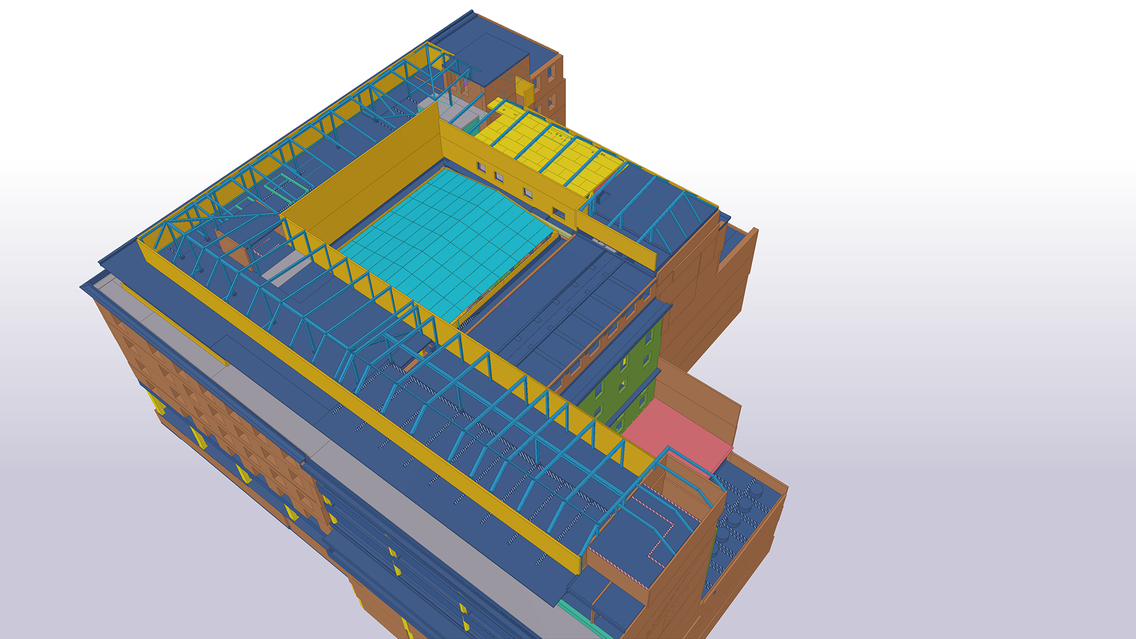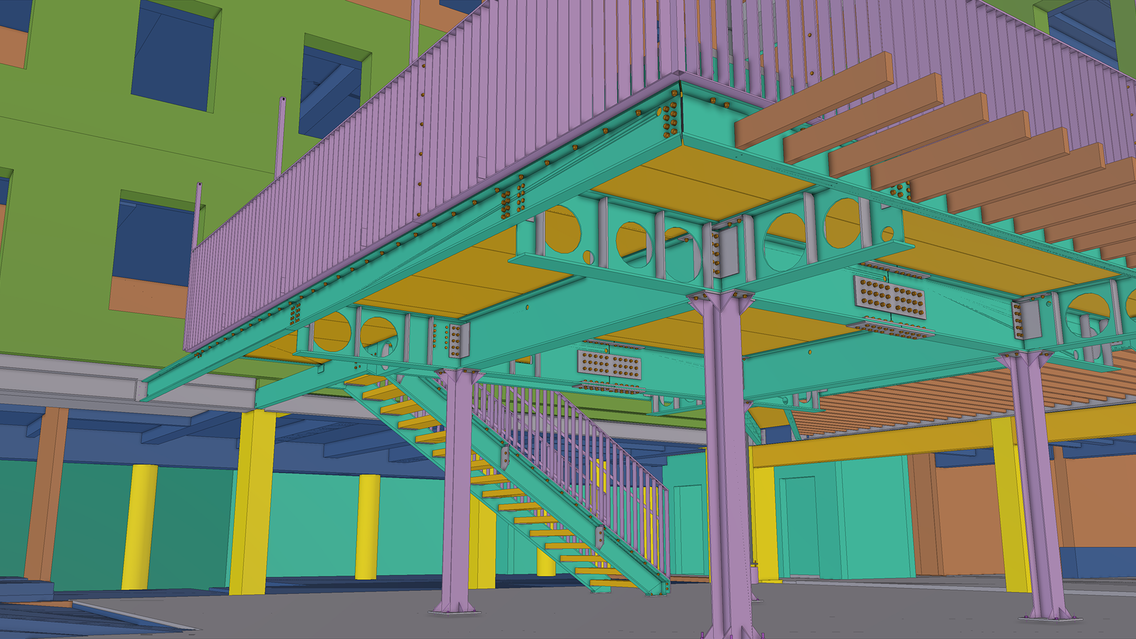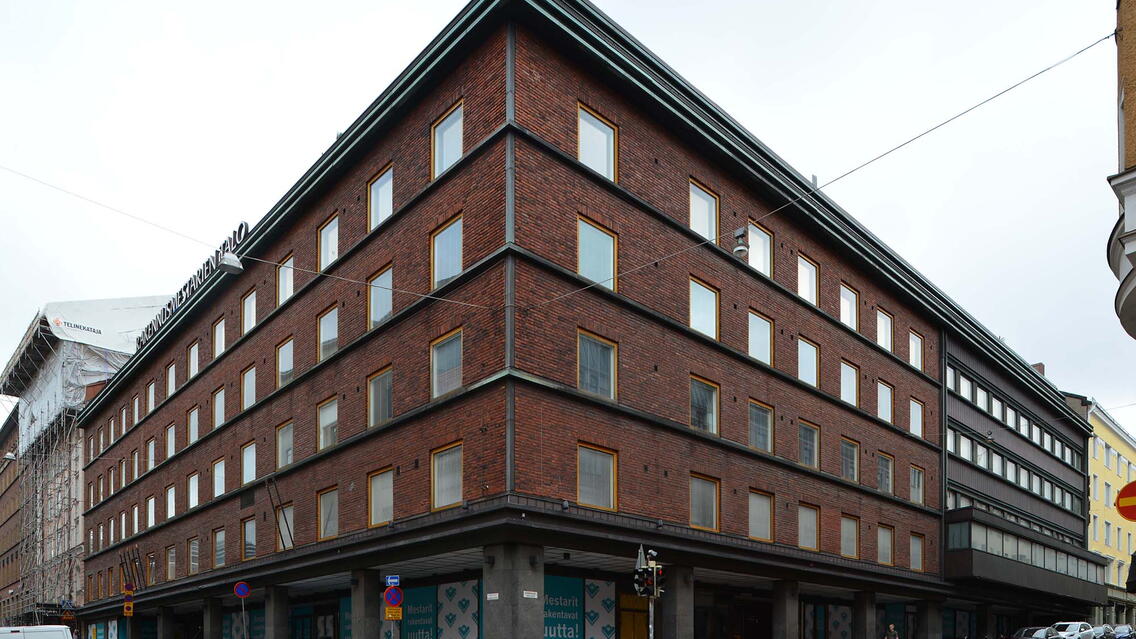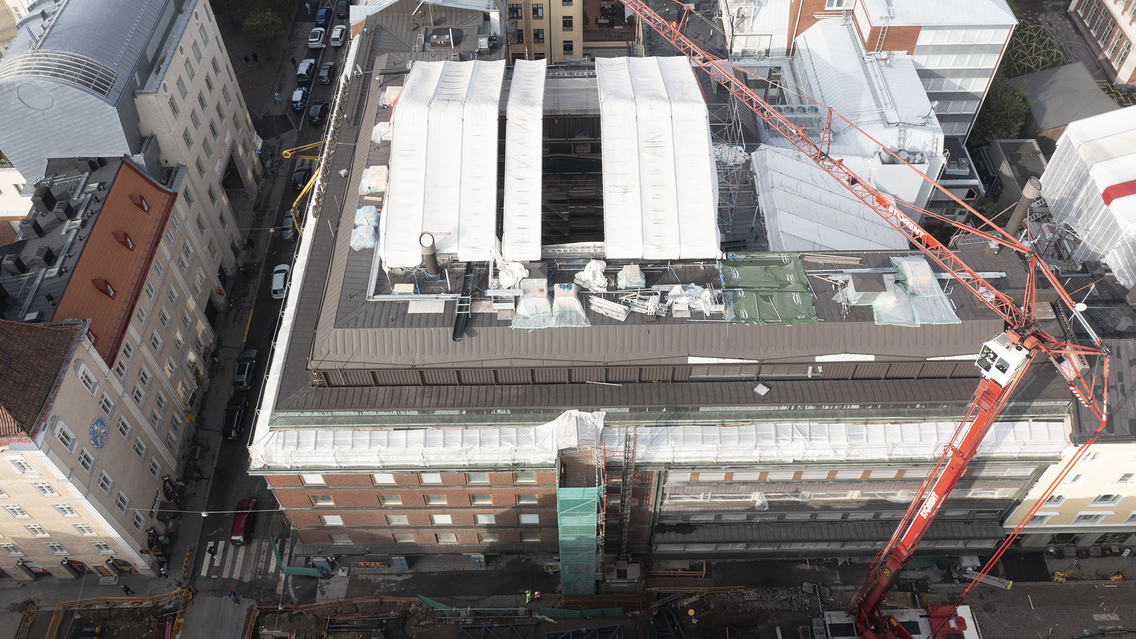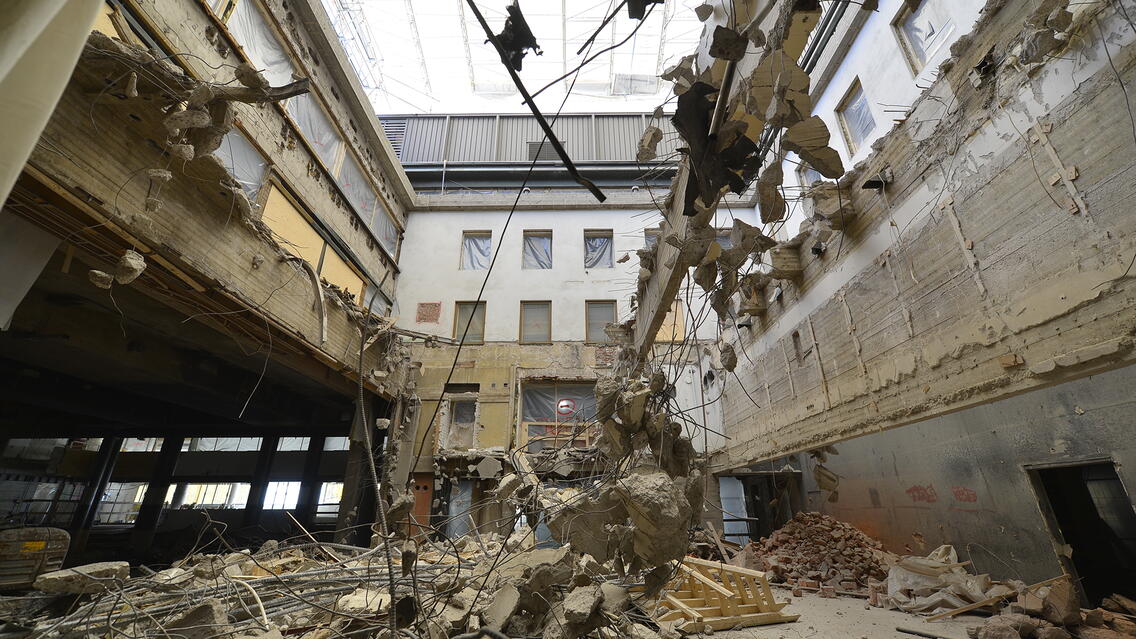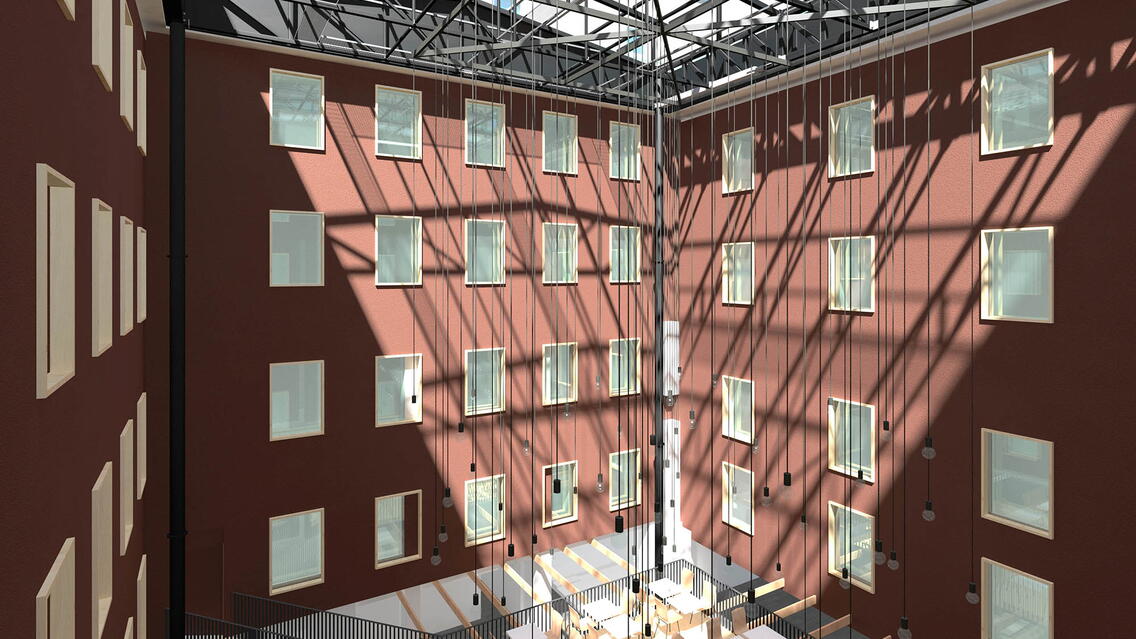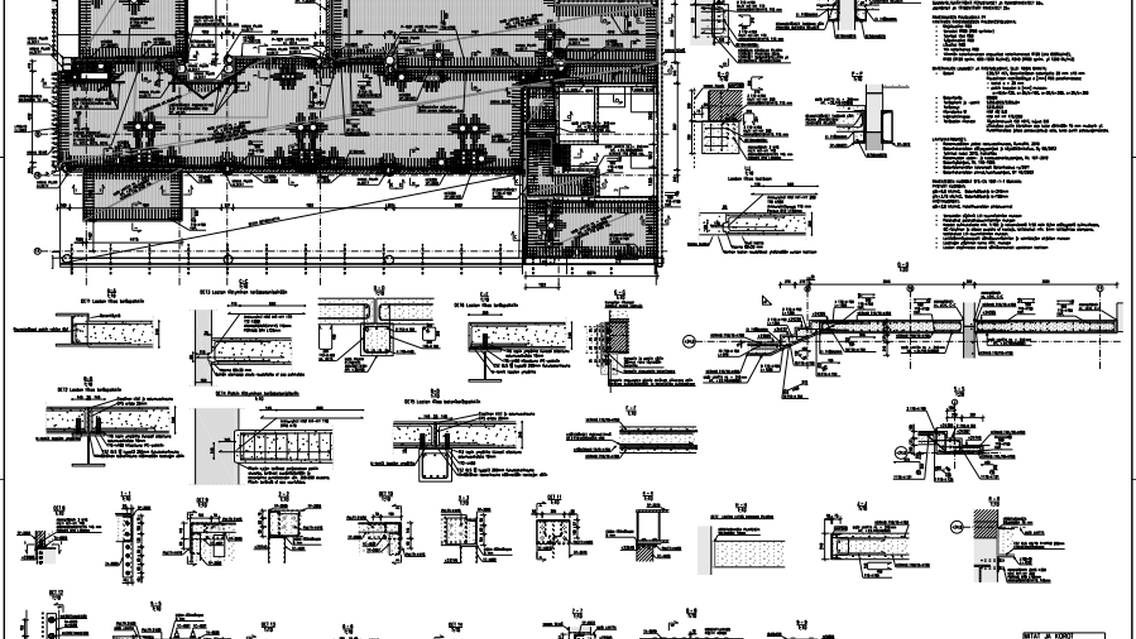Located at Fredrikinkatu 51–53 in the center of Helsinki, the Finnish Builders’ Foundation House’s offices and retail premises are converted into a new hotel under a turnkey contract. At street level, the building is known to have housed the Dubrovnik and Corona bars as seen in Kaurismäki films, and once the project is completed, it will offer retail, parking, hospitality and meeting space outside the hotel, too.
The Builders’ House has been renovated several times during its lifecycle. The project consists of two parts: the original section built in the 1930s and a renovated extension from the 1960s. Preliminary design began at the end of 2018, and the project is to finish in the autumn of 2021, consisting of six floors above the ground, an attic and three basement floors underground. Engineering office Mäkeläinen provides structural design for the project. The total cost of the project is EUR 40 million. The Finnish Builders’ Foundation offices will remain in the property during its new era.
Repair construction design and engineering was based on extensive use of BIM. BIM enabled documenting the building’s history and conversion information, and the model can be used in a variety of ways throughout the project’s life cycle. Old structural design was of good quality, which enabled creating an accurate structural model and helped the design disciplines to grasp what was hidden behind the surfaces.
BIM-based repair construction is an exception
The purpose of the building information model is to provide extensive support for the project parties. Structural design amongst two different offices can happen using Tekla Model Sharing, and at best, the model was simultaneously worked on by 8 structural designers. The model helped to illustrate the features and sections of the building and visualize structural elements, such as the industrial appearance of the steel structures in the atrium loft.
The IFC output from the structural model was divided into three different IFC models. The first of those included existing structural information, from which the structures to demolish were separated based on title and color to survey the scope of demolition works. In addition to the above, the second structural IFC model included the support structures preceding the demolition and safety-critical construction supports. The third IFC model visualized the as-built situation where new, complementary structures were shown around the demolished building masses. The models were shared and composite models updated centrally in Trimble Connect. The BIM coordinator checked design clashes in the composite model and entered notes in the inspection documents which were used to update the model.
The modelled information was used for cost estimation, demolition scope specification, and planning the transport of demolition waste. The model was also used to plan construction works, survey quantities, plan crane equipment, schedule the construction site and order CIP reinforced concrete moulding equipment. During demolition, the structural model helped visualize what was behind surface structures, although surprises are common in the demolition of old properties.
It pays off to start repair construction modeling early in the project
Construction site management has actively used the models during construction to manage the works and illustrate the end result, as well as in communication with various design parties and the project organization. Using the model as a visual tool was found very practical during the pandemic, as visiting the site has been challenging and the design offices are located in different parts of Finland. Many design parties were surprised at the site staff’s activity in using the models.
In a renovation project, modeling should be started and the initial data enriched in good time. Final locations are determined during demolition, and control measurements should be done on a fast schedule, particularly for the load-bearing structures, so that other design parties can proceed with the project. Particularly regarding MEP engineering, it would be important to make clear whether the installations on site will be done based entirely on the model.
The most important tool for checking the locations and elevations of old load-bearing structures proved to be the expertise and equipment of the surveyor on site. Importing as-built measurements as reference files in DWG format to Tekla Structures enabled determining the exact locations of the structures. The as-built measurements helped produce precise drawings for fabrication and design and improved the accuracy of dimensions and locations in the structural model. Another proven tool to aid modeling is the laser-scanned point cloud material.
All design disciplines did their design for the project based on BIM. Modeling included the load-bearing and some complementary structures of the existing building mass as well as the sorting of the structures to keep or demolish. New structures, too, were designed based on BIM. At an early stage, a completely new naming guideline was created for the project because the naming guideline for new construction did not really serve the separation of structures.
The CIP reinforced concrete structures have been modeled with Tekla Structures including components, reinforcements, connections and details related to the surrounding structures. The fabrication design of the steel structures and the atrium loft CLT deck were created with Tekla and submitted in PDF and DWG formats and, when necessary, in 3D geometric drawings. All major structural design was done by modeling. The intention was to model all reservations in the existing structures in the structural model so that they could be used for MEP installations.
Throughout the design process, the models have been coordinated actively amongst project parties and in the coordination meetings organized by Lehto’s BIM coordinator. The models were available to review in Trimble Connect which the design disciplines and the construction site used to communicate by using the ToDo tasks. Unexpected changes during demolition were updated in the structural model as far as possible for the other design disciplines to see. Due to diversity in the building mass, BIM was simplified, for example, by excluding some structures completely from the architect’s model, including double-slab floors and floor beams whose geometry is based on the structural model.
The project used mass and threaded-rod anchoring components, the information of which was directly available for the structural drawings. Structural geometry was imported directly to Robot Structural Analysis software, and the geometry was created in FEM-Design software based on the reference information. The client received both the drawings and the building information model. Some IFC output was excluded to reduce file size. Information exchange benefitted from the fact that the project architect was a BIM specialist. All design changes were implemented through the model because the structures to renovate are not always aligned, even, or symmetrical, and the model best illustrated them.
Project parties
Main contractor: Lehto Tilat Oy
Rakennushankkeeseen ryhtyvä: Rakennusmestarien Säätiö sr
Structural and Precast design: Insinööritoimisto Mäkeläinen Oy
Atrium glass roof steel structures design: Insinööritoimisto Polartek Oy
Architectural design: Arkkitehtihuone APRT Oy
LVIA-suunnittelu: LVI-insinööritoimisto Meskanen Oy
Electrical design: ELVAK Oy
Sprinkler design: Paloff Sammutusjärjestelmät Oy
Inventory model from the old building: Ostromap Oy Ab
Inventory and point coulds after the demolition: Mitta Oy
